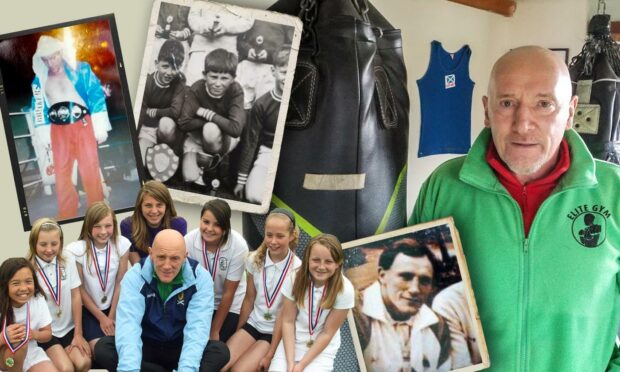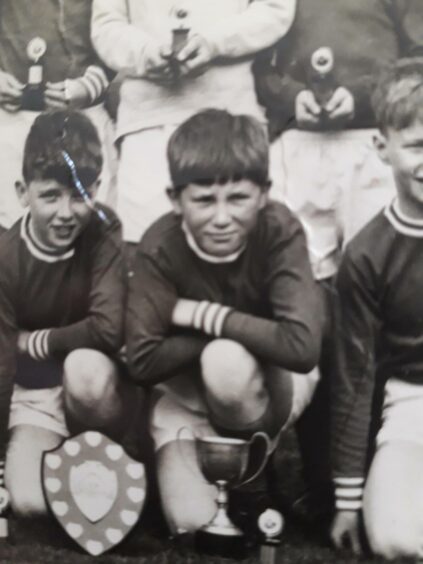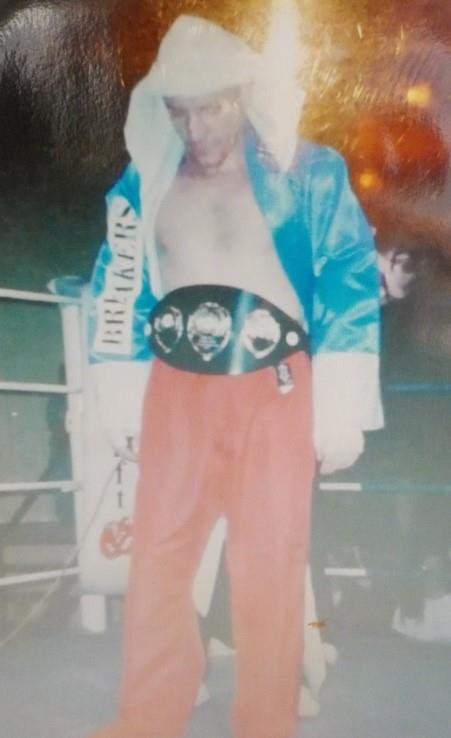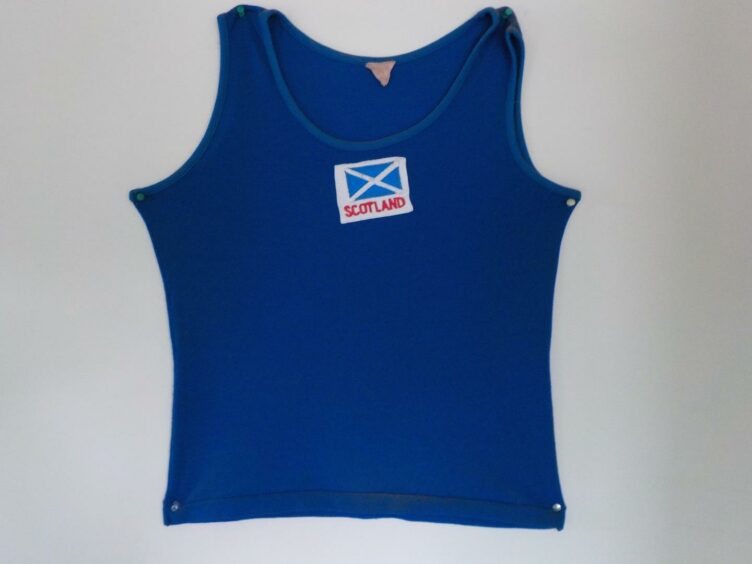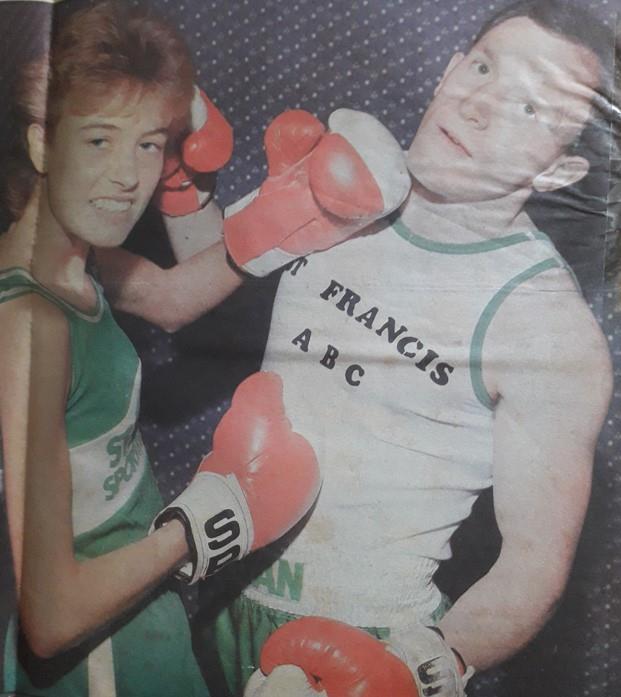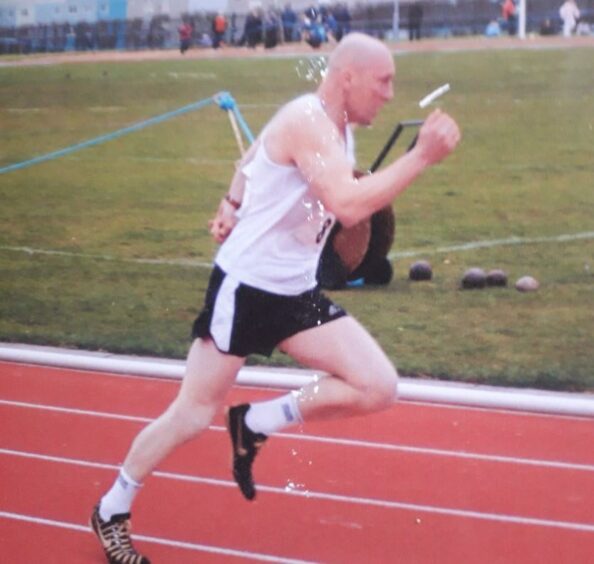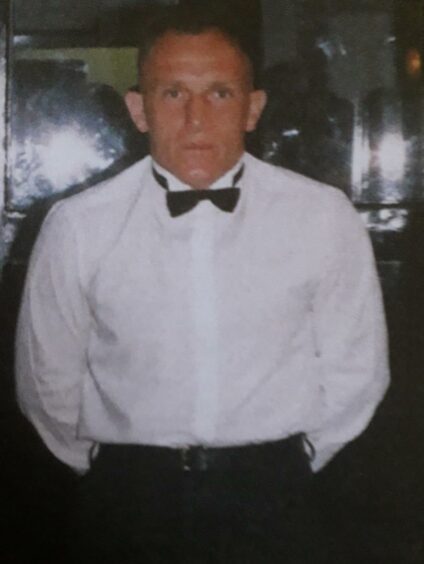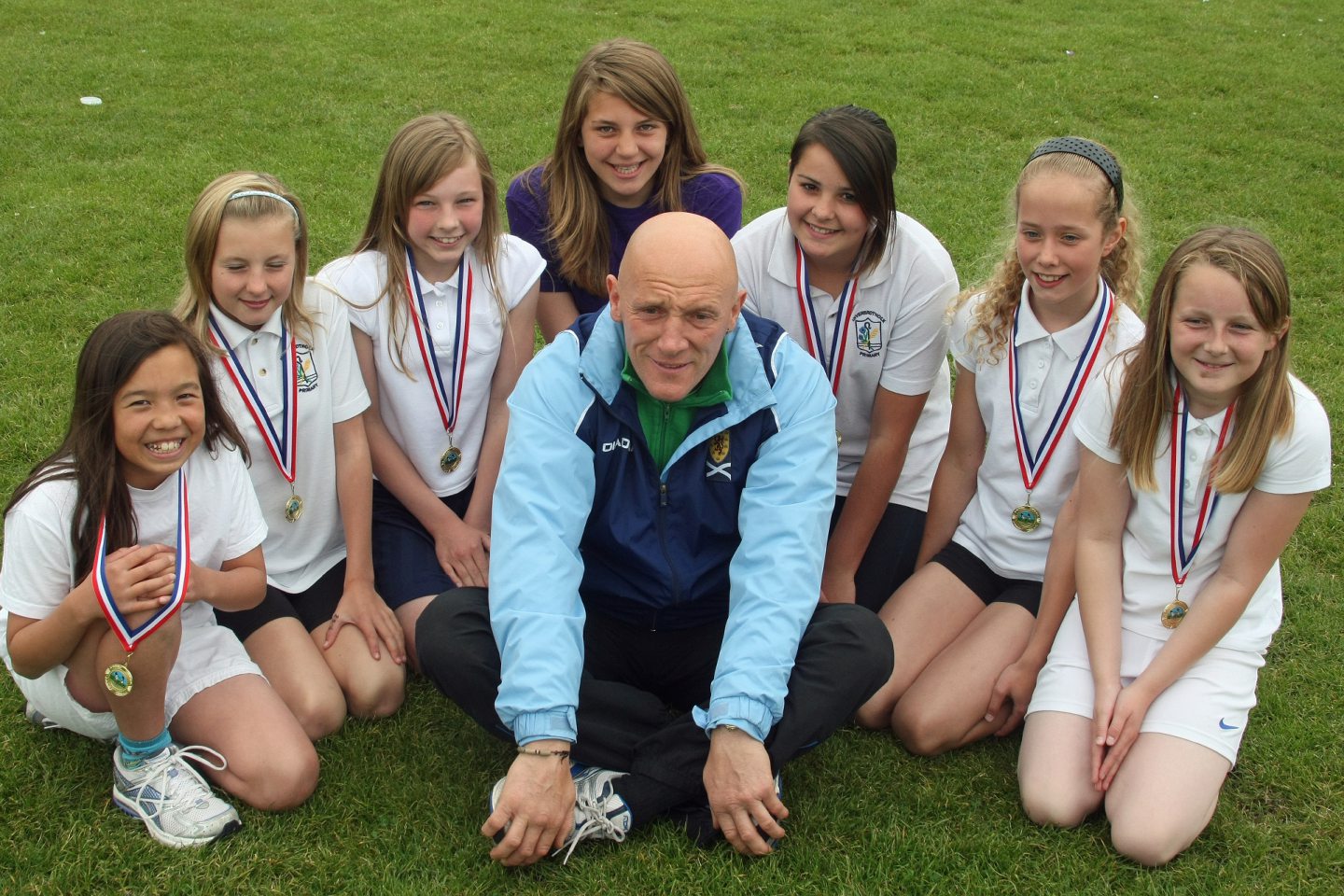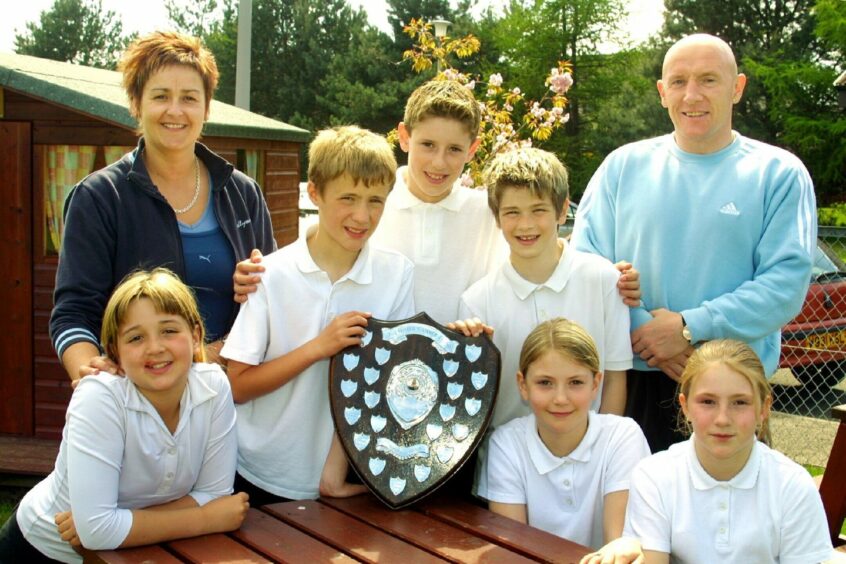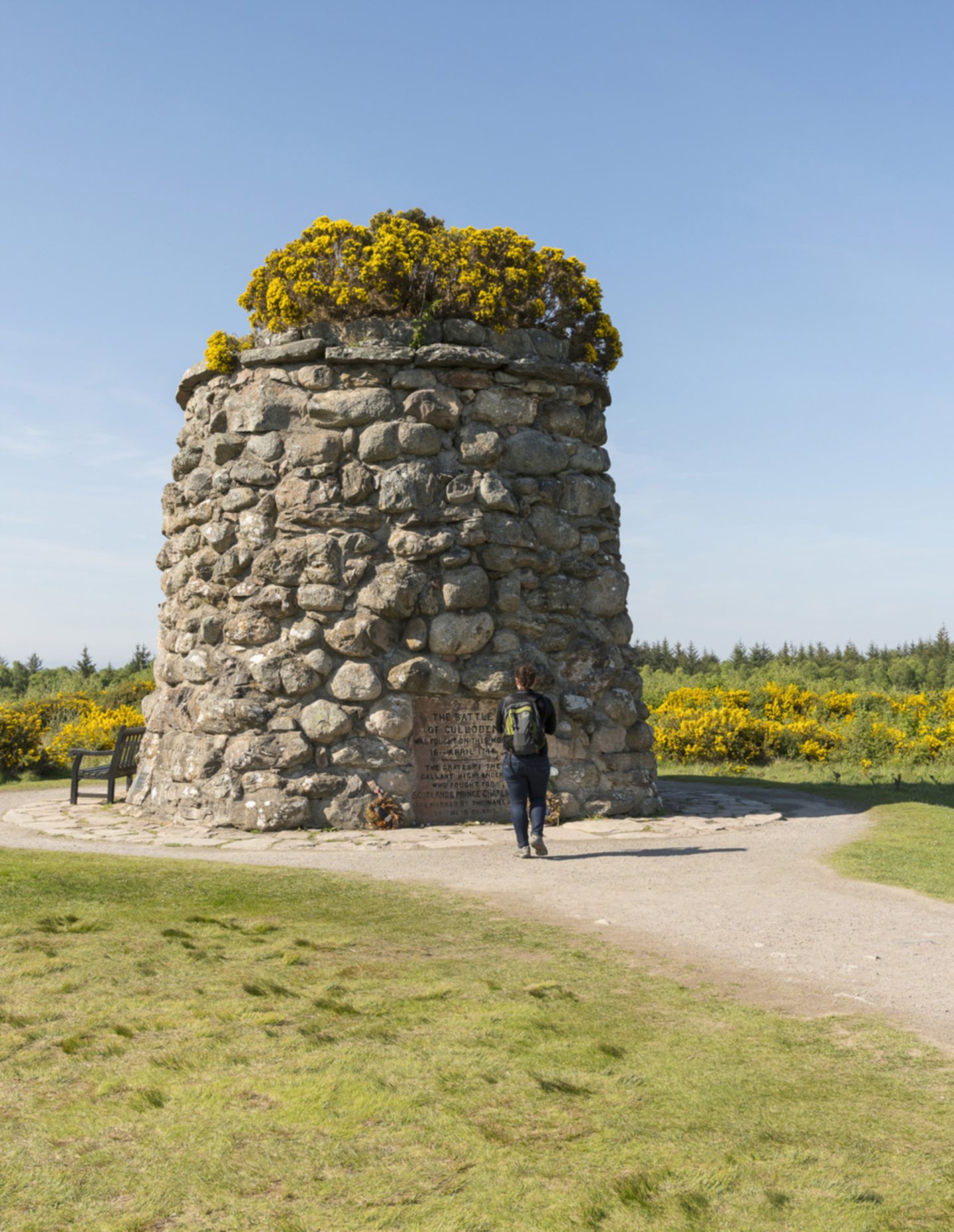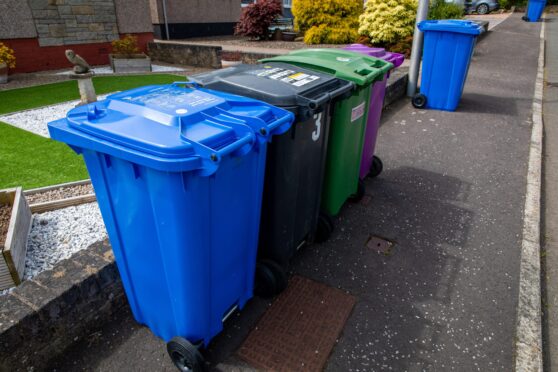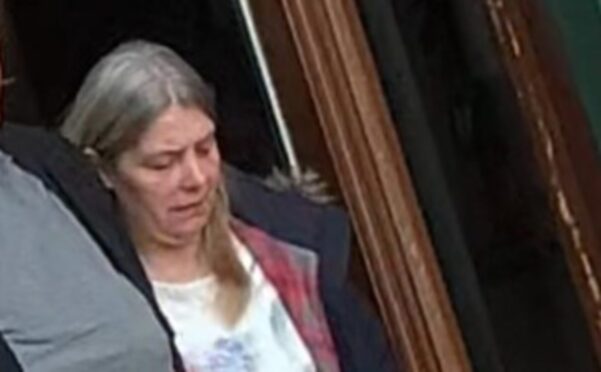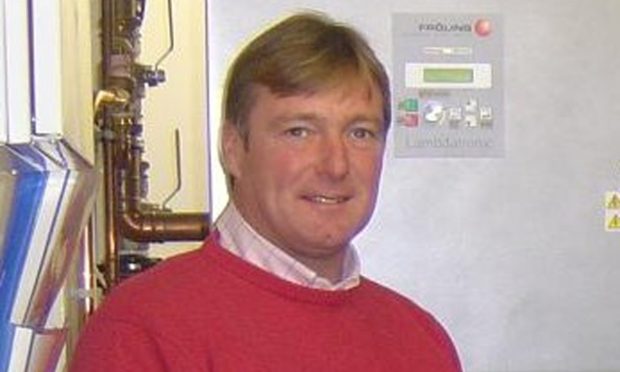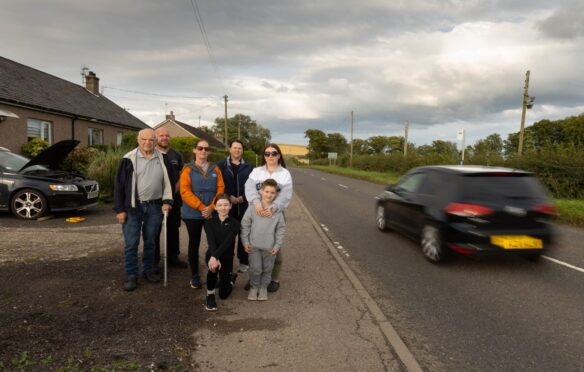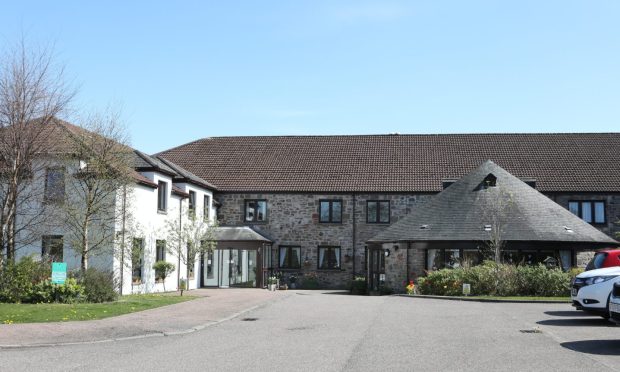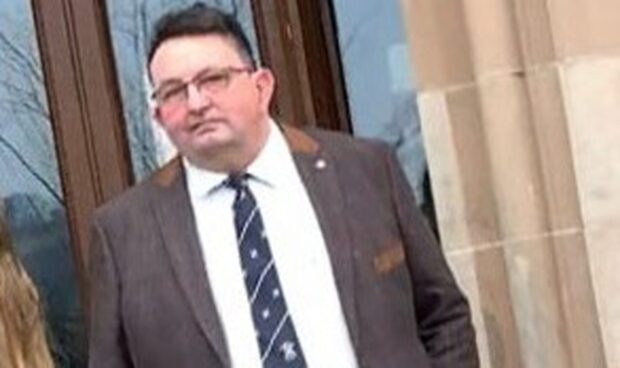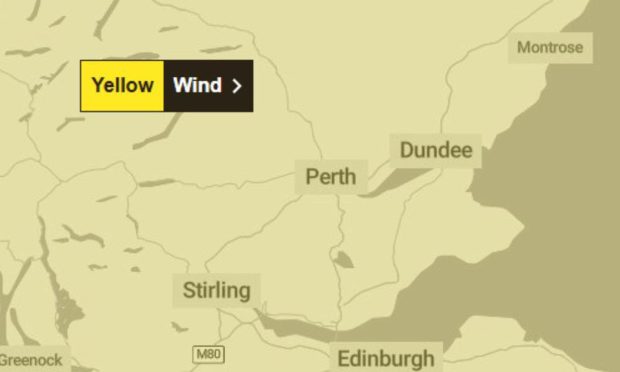If George Ferrie had a bow, the challenge would be finding enough strings to do the man justice.
Now in his 60s, he can reflect on a life in which he has won a Commonwealth Games medal in boxing, been a champion kickboxer and martial arts instructor, had numerous fights as a long-standing Arbroath nightclub bouncer and broken a world record for press-ups.
He has also acted in several episodes of famous TV shows, competed as a showjumper, coached local youngsters to athletic success, written books, created and starred in documentaries and most recently set up his own podcasting series.
George is an Arbroath character more colourful than a rainbow and with enough stories to fill a library.
Throughout an often turbulent and violent life that has included him being stabbed, several assaults and scrapes galore, George has one response to almost everything.
“It was just a bit of fun,” says a man who has also raised thousands of pounds for charities helping children.
It is this carefree attitude – as much as his fitness, strength and incredulous anecdotes – that makes him such a remarkable interview subject.
George’s story is told in the following sections:
- Early boxing regret
- Commonwealth history and retirement
- Fights and community service
- World record, books, podcasts, pets
Early boxing regret
George Ferrie was born in Townhead in the very heart of Glasgow.
His time at Scotland’s biggest city was short, remembering only a stint in hospital with meningitis when young.
At just five, George moved to Bloomfield Place, Arbroath, with his father James, a moulder at Giddings & Lewis-Fraser, mother Brigitte and older sister Catherine.
He has two daughters: Katherine who stays in Ireland, and Georgia who lives in the Angus town.
A pupil at St Thomas Primary and Arbroath High, George left with four O-Levels but he says his best ‘subjects’ were football, where he played at right-back for Angus County, and boxing.
“Boxing was warmer so chose I that,” he jokes, adding that he took up the sport, and karate, from the age of 12.
‘It was not good advice’
On leaving school at 16, George got a job as an engineer and later maintenance fitter at Halliburton, where he stayed for four years.
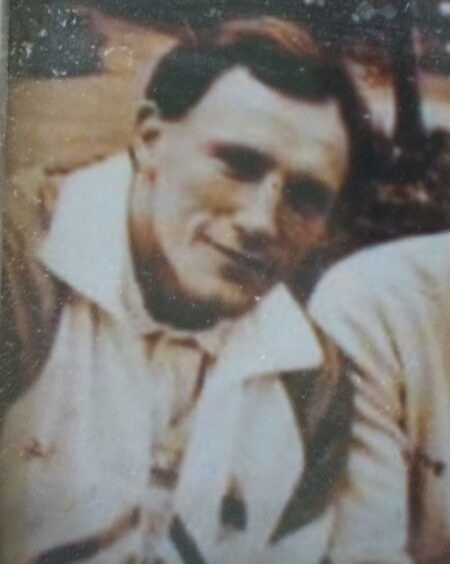
He regrets it though.
“My dad kept telling me not to be a professional boxer – ‘get a trade behind you and get some experience’,” says George.
“It was not good advice because I was into boxing big-time and should have gone professional, though I did eventually.
“I was training myself in a garage along the road. I used to just punch the bag and I thought I should play someone properly.”
Commonwealth history and retirement
He joined St Francis Boxing Club in Dundee and soon got involved, as an amateur, with the Scottish national team.
“I was going on trips to Holland, Sweden, Poland, Canada, Wales, England, France and other places for Scotland – I was enjoying it,” George recalls.
The middleweight reached the final of the Scottish championships in 1984 and 1985 before winning the competition at Grangemouth in 1986, which qualified him for that year’s Commonwealth Games in Edinburgh.
“It was magnificent to get picked for the Scottish team,” George says. “Going to Edinburgh was fantastic. There was a buzz; you’ve got your kilt on and know you are competing for Scotland.”
‘I had to go to hospital’
Not only did George compete but he made history by becoming the first Scottish middleweight ever to win a Commonwealth Games medal of any description.
In the all-important quarter-finals he defeated James Iahuat from the island of Vanuatu in the South Pacific.
Having previously broken his right hand in winning the Scottish title, George duly suffered a fracture of his left hand in the second-round stoppage of Iahuat.
“I had to go to hospital in the morning to get my hand checked out,” he says.
In the semi-finals he was pitted against Englishman Rod Douglas, the eventual gold medallist. With an injured hand George didn’t stand a chance and the fight was stopped in the first round.
“I said ‘of course I’ll fight’,” says George of his defiance. “They knew I had a busted left hand and had no chance. With two hands you never know – I would have had a wee bit of a chance but probably no chance!
“It was just a bit of fun, I didn’t care.”
Mercifully, George never had to comprehend another fight during the tournament because both defeated semi-finalists were automatically awarded a bronze medal.
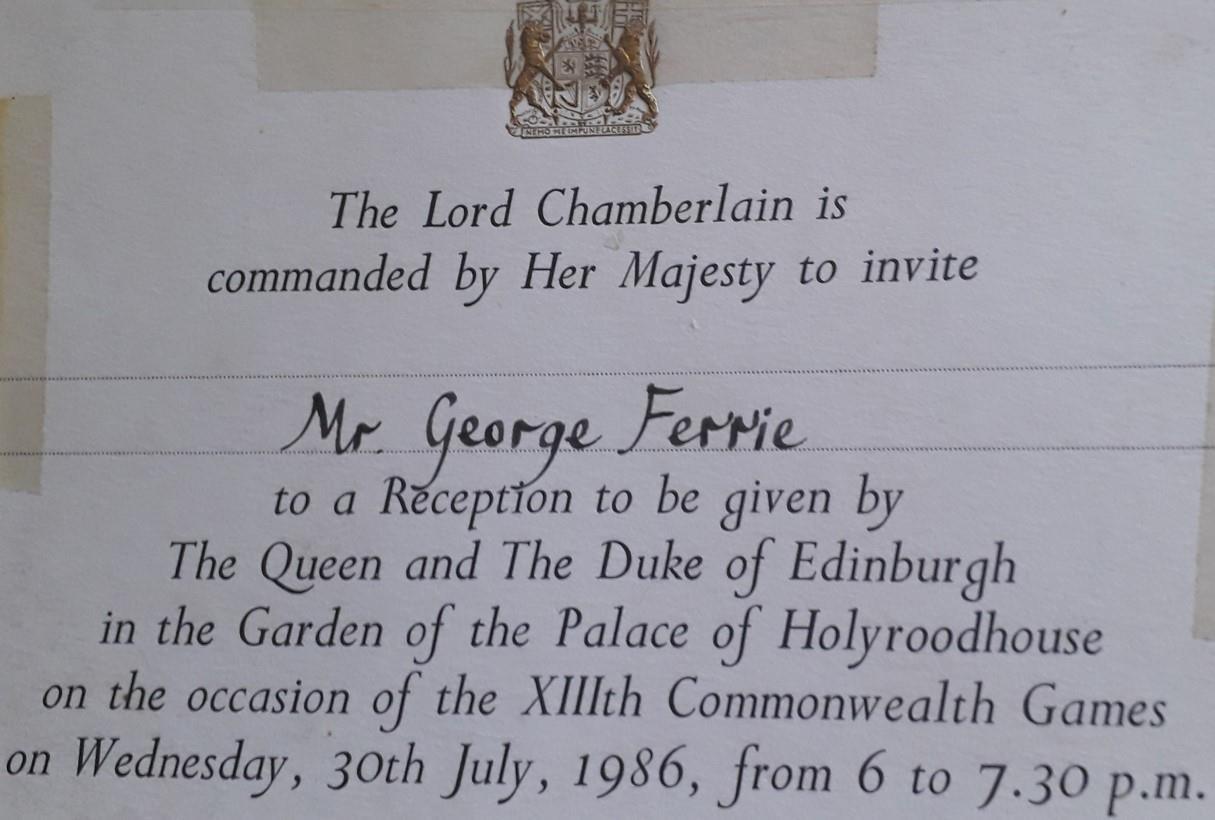
On returning to Tayside, George joined his family as well as fellow medallists Liz Lynch (later McColgan and Nuttall) and Ruth Gilfillan on the upper deck of an open-top bus through Dundee city centre for a victory parade.
‘I didn’t want to mess up my brain’
After the Games, George went professional for “a wee laugh”.
In October 1989 he narrowly lost to Simon McDougall on points in Glasgow’s Edmiston Club. In his next bout George defeated Terry French on points in Albany Hotel, Glasgow.
His third fight, a loss against Quinn Paynter at Glasgow’s Hospitality Inn in March 1990, turned out to be his last. The contest was stopped in the final round.
“I didn’t want to mess up my brain so that was enough fights for me,” he says.
“I had been boxing from 11 and stopped competing when I was 34.
“It was time to stop so I didn’t take too much punishment. I fought some of the best people in the world.
“You get hit and it takes some of your marbles. You don’t want to lose them all. The time comes when you have to stop competing and at 34 it was my time.”
‘Bruce Lee was my main influence’
George turned his attention to other sports.
He joined the athletics club in Carnoustie and competed in 200m, 400m and 800m races.
Kickboxing also became a bigger part of his life. Since his teenage years he had been a practitioner – as well as of karate – and now he had more time devote it.
“I just enjoyed keeping myself fit,” he says.
“Bruce Lee was my main influence and I started reading his stuff. In 1994 I got a chance to compete for the kickboxing British final in Hemel Hempstead and won to become British champion.
“I started doing kickboxing seminars in 1999, also running shows in Aberdeen and Arbroath.
“I felt I had had my time and was good to let other people do their thing.”
Fights and community service
The one constant throughout George’s sporting endeavours was working as a security guard at various nightclubs in Arbroath, including Libertys, Smokies, Westport Bar and its predecessor Malacca.
It was a role he began at the age of 17, in the 1970s, when society was going through one of its more violent periods.
George was caught up in numerous scrapes that he would later document in his book ‘Little Big Man’.
He says many of the fights involved Marines stationed at the 45 Commando Unit based at HM Condor, five miles to the north.
“I admire the Marines,” he says. “We fought them down the West Port. We would have a fight but nothing else was said about it.
“Smokies held 1,500 people. Back then Arbroath was wild. It was a garrison town so there was fighting every weekend. It was exciting.
“Folk would get involved with parties and fights. I was on the doors and getting involved in fights all the time.
“The times were different and it was fun. We didn’t care.”
‘I was getting in three or four fights a night’
If George sounds blasé about fighting and violence, he insists his actions have invariably been rooted in self-defence.
“When you’re bouncing everyone wants to fight you – I was getting in three or four fights a night.” he says.
“The worst one ever was after I was involved in a skirmish on a Friday night.
“Then on the Sunday I started working for Westport and there were 14 marines in the pub.
“I thought ‘these are never usually in here on a Sunday – it’s usually locals on a Sunday’.
“They started smashing pool cues and coming up to me with them. I thought, ‘this is a bit strange, no?’
“Then they started fighting me and I started beating them up.”
He claims the altercation ended after police arrived.
‘I then got stabbed in the face – I just laughed’
There was also the incident that left George with a facial stab wound and a conviction of his own.
He claims it kicked off when he went to a house in a bid to protect loved ones.
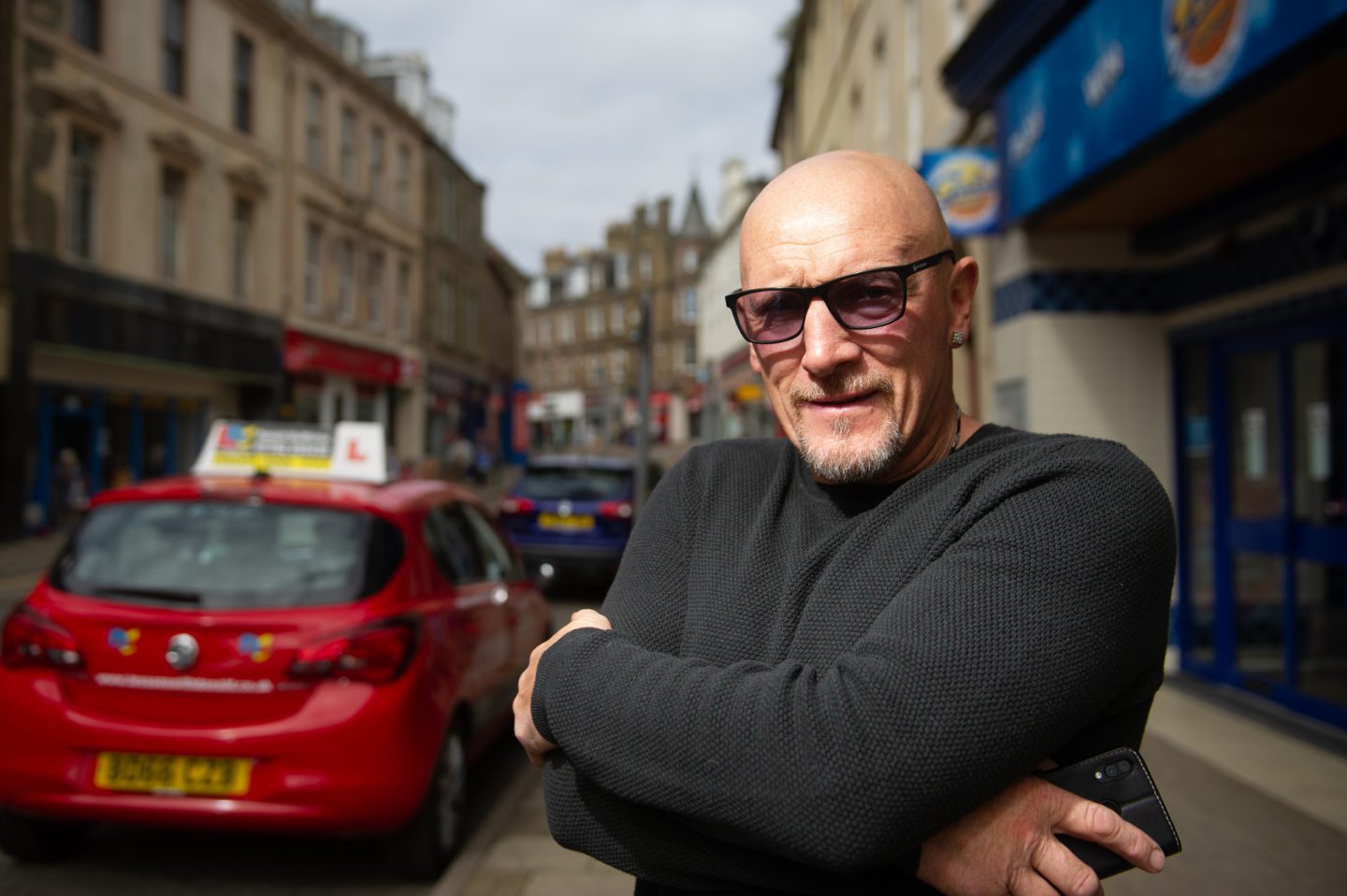
“I was smashed at with a pillowcase full of six snooker balls that burst,” he says.
“I then got stabbed in the face – I just laughed. It wasn’t my fault – they tried to kill me. I thought ‘who cares’? What’s the point of worrying?
“They called me the instigator and police came and took me to the cell. My face was killing and blood was pouring all over the place.
“They charged me with serious assault and I was convicted and had to do 200 hours’ community service for assault.
“This was crazy and didn’t make sense but it’s just a part of life.”
Scrapes also occurred external to the world of nightclubs.
One day George was on his way home from teaching Thai boxing at Arbroath Community Centre when he spotted an altercation at a bus stop.

“One guy was kicked to bits as he got off the bus,” he observed. “There was at least 30 people hitting this guy off the bus.
“I said ‘that’s not fair’ so I attacked 30 guys. I started kicking and punching them. They thought there were lots of people fighting them but it was just myself. I didn’t get done for that one.”
World record, books, podcasts, pets
Mixed in with all the surrealism were less morally troubling achievements.
In 1996, for example, George set a new world record by completing 1,003 press-ups in 171 minutes.
“I felt fine and reckon I could have gone on for ages,” he told The Courier at the time.
This was a hint of what was to come as George eventually dialled down the chaos.
And so it was, around 10 years ago, that he stopped being a doorman to lead a more calmer existence.
George accumulated much of his money through his former ownership of security agency Top Notch, whose clients included Glamis Castle, and renting out four flats in Arbroath.
This has given him the cushion to pursue projects based on his interests while donating money to charity, usually Children’s Hospices Across Scotland (Chas).
He spent half-a-dozen years teaching sprint and cross-country to children at Inverbrothock Primary School in Arbroath. One of his proudest achievements was leading the P7 boys to the Scottish cross-country title.
George, a Reiki master, continues to teach kickboxing and has his own gym in his Arbroath home.
“I have four punch bags and weights,” he says. “I am a personal trainer and just like to keep myself busy.
“I am not interested in money. I have flats, my gym. In teaching people and the flats I get by.”
‘Scottish soldiers died here’
In recent years George has been embracing the media in various forms.
He has been a regular face as an extra in shows such as River City, Outlander and Bob Servant. He also appeared in Sunshine on Leith.
George has released three DVDs of his own. He made and acted in a film called Betrayal in protest at a plan to build 14 homes at Culloden Moor, Inverness, the site of the final confrontation of the Jacobite Risings in 1745.
The fictitious 32-minute production shows the developer awakening the Jacobite soldiers in the battle, who in turn cause havoc and turmoil to everyone involved in building the homes.
“Scottish soldiers died here and I was disgusted about that,” George says. “The ghosts were attacking and it was such a laugh making the film.”
He made another film on Glencoe and a third, Street Self Defence, about the use of martial arts in situations of physical danger.
‘Only some foods are healthy’
His autobiography, Little Big Man, proved a success, with thousands of copies sent out across the UK and to the likes of Spain and South Africa.
George’s latest project is a healthy eating book in which he advises caution in relation to eating smoked food and meals containing preservatives.
“Only some foods are healthy. Pomegranate and blueberry seeds are fantastic for you – things like that,” he says.
The book also contains exercises you can do in the house and issues warnings about sugar-rich foods.
“I know that organic food is expensive but it is probably the best thing you can eat,” says George, a vegetarian.
“The best morning cereal is porridge with blueberries in it. Weetabix is fine with some blueberries.”
George has also begun his own podcast series, Elite Gym Podcasts.
The first interview was with former Dundee boxer George Kerr, and he has more planned.
‘If you keep yourself fit you will live a long life’
George is additionally an experienced horse trainer and showjumper, having owned Kasey, a thoroughbred, for 24 years.
“I got him at 10 and jumped him until he was 30,” he says. “He died at 34.”
Also living a long life is his Husky Codie, still going strong and walking the hills at 16-and-a-half. He also has Husky Josie, 10, and Bonnie, a four-year-old Yorkshire Terrier.
“I had seven Huskies and did Husky racing,” George says. “I believe that if you keep yourself fit you will live a long life.”
George himself remains as fit as a fiddle and shows no sign of becoming shy and retiring any time soon.
“I still do kickboxing and sometimes I bike to St Andrews and back. I keep myself super fit,” he says.
“I was friends with Carnoustie man Andy Coogan. He was the nicest man and was 99 when he died and he continued to play golf into his 90s.
“He gave me encouragement to continue running. I was racing at the Highland Games, Meadowbank and Caird Park. I do things all the time.
“I’ve had a fantastic life and done things I couldn’t have dreamt of.”
You might enjoy:
Glam club tales: Dundee’s Tahir on drunk DJs, Polish mafia and Scotland’s biggest night ever
Diehards, celebrity tantrums and Mr Blobby: Tales from Dundee’s The Bank Bar
